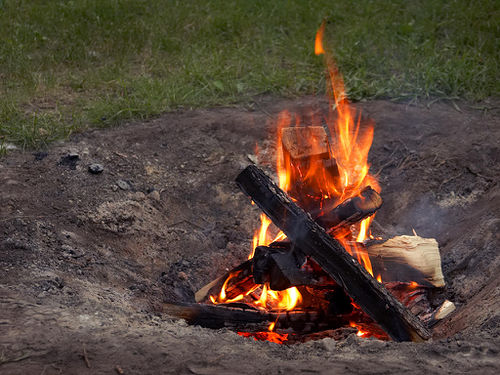Earth Pit Kiln: Difference between revisions
Jump to navigation
Jump to search
mNo edit summary |
m (inserted categorization) |
||
| Line 15: | Line 15: | ||
[[Category:Biofuel]] | [[Category:Biofuel]] | ||
[[Category:Food and Agriculture]] | [[Category:Food and Agriculture]] | ||
[[Category:Biochar]] | |||
Revision as of 17:10, 21 August 2016
One of the simplest ways of turning biomass into charcoal is the “earth pit kiln”. It turns out that it also gives a very clean burn that allows for the production of high-quality biochar. It is less useful for making traditional charcoal. This is because most of the volatiles (gases, liquids, tars, etc. - basically, pyrolysis oil) are driven off and burned by this method and therefore lost from the energy content. In addition to char production, the heat generated in the pit kiln can be used for other products, such as pottery and other ceramics. These products may or may not be comparable in quality to those from a dedicated firing.
A similar type of pyrolysis is achieved by the more sophisticated Kon-Tiki Kiln.
